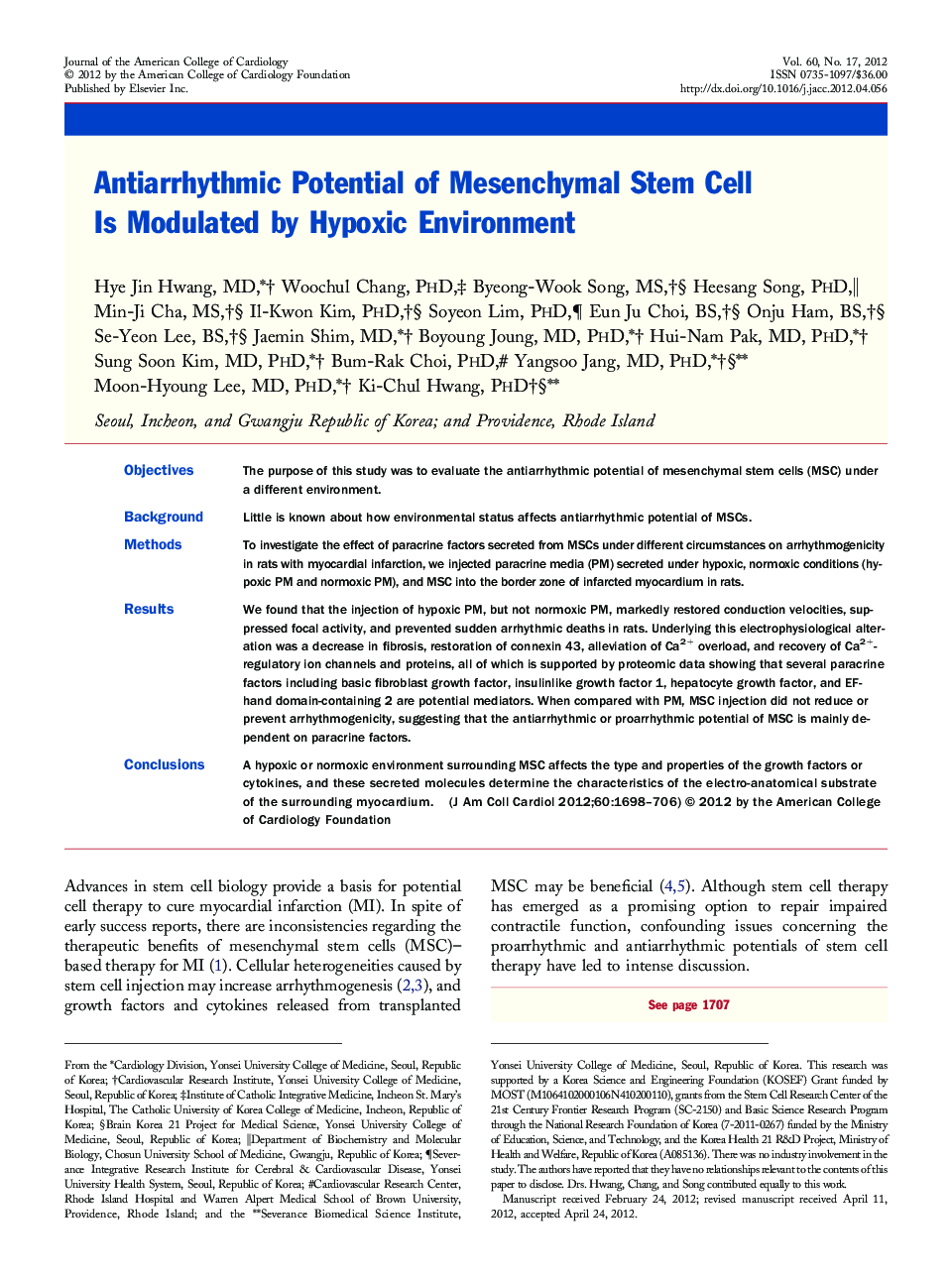| Article ID | Journal | Published Year | Pages | File Type |
|---|---|---|---|---|
| 2947063 | Journal of the American College of Cardiology | 2012 | 9 Pages |
ObjectivesThe purpose of this study was to evaluate the antiarrhythmic potential of mesenchymal stem cells (MSC) under a different environment.BackgroundLittle is known about how environmental status affects antiarrhythmic potential of MSCs.MethodsTo investigate the effect of paracrine factors secreted from MSCs under different circumstances on arrhythmogenicity in rats with myocardial infarction, we injected paracrine media (PM) secreted under hypoxic, normoxic conditions (hypoxic PM and normoxic PM), and MSC into the border zone of infarcted myocardium in rats.ResultsWe found that the injection of hypoxic PM, but not normoxic PM, markedly restored conduction velocities, suppressed focal activity, and prevented sudden arrhythmic deaths in rats. Underlying this electrophysiological alteration was a decrease in fibrosis, restoration of connexin 43, alleviation of Ca2+ overload, and recovery of Ca2+-regulatory ion channels and proteins, all of which is supported by proteomic data showing that several paracrine factors including basic fibroblast growth factor, insulinlike growth factor 1, hepatocyte growth factor, and EF-hand domain-containing 2 are potential mediators. When compared with PM, MSC injection did not reduce or prevent arrhythmogenicity, suggesting that the antiarrhythmic or proarrhythmic potential of MSC is mainly dependent on paracrine factors.ConclusionsA hypoxic or normoxic environment surrounding MSC affects the type and properties of the growth factors or cytokines, and these secreted molecules determine the characteristics of the electro-anatomical substrate of the surrounding myocardium.
